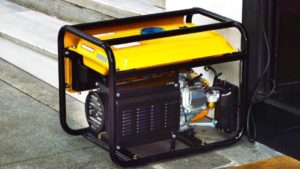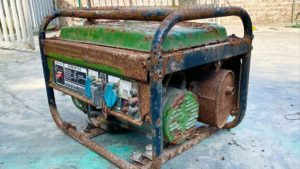When it comes to doing laundry off-grid, efficiency is key.
Traditional washing machines and dryers require a significant amount of energy and water, which can be expensive and harmful to the environment.
However, there are several alternative solutions that can help you save time, money, and resources while still keeping your clothes clean and fresh.
We will explore efficient laundry solutions for off-grid living, including hand-washing, using a bucket washer, and innovative drying methods like the clotheline or a solar dryer.
By implementing these strategies, you can reduce your carbon footprint and enjoy the benefits of sustainable, self-sufficient laundry care.
Sort your clothes before washing
Separate your clothes into different piles based on their color, material, and soil level. This will help you to use the minimum amount of detergent and water needed, and also prevent colors from bleeding or fabrics from damaging each other during the washing process.
Start by sorting your clothes into three primary piles: one for light-colored items, one for dark-colored items, and one for whites and brights.
Within each pile, separate items into different sub-piles based on their material, such as cotton, polyester, and silk.
This careful sorting will help you use the minimum amount of detergent and water needed, as well as prevent colors from bleeding or fabrics from damaging each other during the washing process.
For example, you can wash your light-colored items with a gentle detergent and cold water to maintain their brightness and prevent fading, while your dark-colored items can be washed with a more intense detergent and hot water to deep clean their fibers.
By carefully separating your clothes before washing, you’ll save time, money, and effort in the long run while keeping your clothes looking their best.
Use a clothesline or a drying rack
Instead of using an electric clothes dryer, consider using a clothesline or a drying rack to dry your clothes. These options are not only more energy-efficient, but they can also help to preserve the longevity of your clothes by reducing wear and tear from machine drying.
Consider forgoing the electric clothes dryer and instead utilize a clothesline or drying rack to dry your clothes.
Not only are these options more energy-efficient, but they also provide a gentler alternative to machine drying that can help extend the lifespan of your clothes.
When using a clothesline or drying rack, avoid overcrowding and check your clothes frequently to avoid wrinkles and potential damage.
To ensure proper drying, consider using clips or clothespins to secure your clothes to the line, and for delicate items like lingerie, consider hand-drying them on a towel to prevent damage.
Consider using a clothesline in your home to not only dry your clothes but also to enjoy fresh air and a space-saving alternative to storage.
By choosing a clothesline or drying rack, you can reduce your carbon footprint and enjoy a more energy-efficient, eco-friendly, and cost-effective solution for drying your clothes.
Use cold water
Wash your clothes in cold water instead of hot water. Not only does this save energy, but it also helps to preserve the colors and texture of your clothes.
Washing your clothes in cold water instead of hot water is a simple yet effective way to save energy and preserve the quality of your clothing.
Hot water requires more energy to heat, and using cold water can help reduce your carbon footprint and lower your energy bills.
Hot water can damage or fade clothing over time, especially if you have delicate or brightly colored items.
Cold water, on the other hand, is gentler on fabrics and helps to preserve the colors and texture of your clothes.
It’s especially beneficial for items like wool, silk, or delicate synthetic fabrics that can be prone to shrinkage or color bleeding in hot water.
By opting for cold water washing, you can extend the life of your clothes, maintain their vibrant colors, and keep them feeling soft and comfortable.
So next time you do laundry, consider using cold water for a more sustainable and effective cleaning experience.
Use a washing board
A washing board is a simple and eco-friendly option for washing clothes by hand. It uses no electricity and can be a great alternative to a washing machine.
Looking for an eco-friendly and cost-effective solution for washing your clothes?
Consider using a washing board!
Unlike traditional washing machines, a washing board requires no electricity and uses only water and detergent to clean your clothes.
This simple, handheld device is perfect for small loads of laundry and can be a great alternative to a washing machine.
With a washing board, you’ll not only save money on your electricity bill, but you’ll also reduce your carbon footprint.
The process of washing clothes by hand is more energy-efficient than using a washing machine, and it can be a great way to get your clothes clean without contributing to the demand for electricity.
Plus, a washing board is easy to use and requires minimal effort – simply soak your clothes in warm water, rub detergent into the fabric, and rinse thoroughly.
Not only is a washing board eco-friendly, but it’s also durable and can last for years with proper care.
The sturdy frame and rubber surface make it easy to scrub and wring out clothes, and it can be used to clean delicate items like lingerie and hand-washables.
Plus, it’s easy to store and transport, making it a great option for those who live in small spaces or need to do laundry on-the-go.
Overall, a washing board is a simple, eco-friendly, and cost-effective solution for washing your clothes by hand.
Say goodbye to high electricity bills and unnecessary waste, and opt for a washing board instead.
Your wallet and the environment will thank you!
Use a push-pull washing machine
If you do need to use a washing machine, consider using a push-pull machine instead of a traditional front-loader. Push-pull machines use less water and detergent, and they are also more energy-efficient.
If you do need to use a washing machine, consider using a push-pull machine instead of a traditional front-loader.
Push-pull machines use less water and detergent, and they are also more energy-efficient.
Unlike front-loaders, which require a large amount of water and detergent to clean clothes, push-pull machines use a minimal amount of water and detergent to achieve the same results.
This not only saves you money on your utility bills, but it also reduces your carbon footprint and minimizes the amount of wastewater produced by the machine.
Push-pull machines are designed to be more energy-efficient, which means they use less electricity to run and can help you save money on your energy bills.
Overall, using a push-pull washing machine is a simple yet effective way to reduce your environmental impact and save money on your utility bills.
Use homemade detergent
Instead of buying commercial detergent, consider making your own. There are many simple and effective recipes available online that use natural ingredients like baking soda, washing soda, and soapnuts. These recipes are not only cheaper and more eco-friendly, but they can also be tailored to your specific washing needs.
Looking for a cost-effective and environmentally friendly alternative to commercial detergent?
Consider making your own detergent at home using natural ingredients like baking soda, washing soda, and soapnuts!
Not only will you save money by avoiding the high prices of commercial detergents, but you’ll also reduce your carbon footprint and have the satisfaction of knowing that your clothes are being cleaned with safe, gentle ingredients.
There are many simple and effective recipes available online that can be tailored to your specific washing needs.
For example, you can make a versatile all-purpose detergent using a combination of baking soda, washing soda, and soapnuts.
This recipe is easy to make and can be adjusted to suit different washing machine types and loads.
You can customize the recipe to address specific laundry needs, such as removing tough stains or softening hard water.
Not only is making your own detergent cost-effective, but it’s also a great way to reduce your household waste.
By using natural ingredients that are readily available and biodegradable, you’ll be minimizing your impact on the environment.
Plus, you’ll have the satisfaction of knowing that you’re using a product that’s free from harsh chemicals and synthetic fragrances.
Ditching commercial detergent in favor of homemade recipes made with natural ingredients is a smart and sustainable decision.
Not only will you save money and reduce your environmental impact, but you’ll also have the satisfaction of knowing that your clothes are being cleaned with safe, gentle ingredients.]]
Making your own laundry detergent is an excellent way to save money, reduce waste, and use gentler ingredients on your clothes.
Instead of relying on commercial detergents that can contain harsh chemicals and synthetic fragrances, you can create your own eco-friendly detergent using natural ingredients like baking soda, washing soda, and canning salt.
These ingredients are not only effective at removing dirt and stains, but they are also readily available and biodegradable.
To make your own detergent, you can find many simple and effective recipes online that are adjustable to suit different washing machine types and loads.
You can customize the recipe to address specific laundry needs, such as removing tough stains or softening hard water.
You can use essential oils for fragrance, which are natural and free from harsh chemicals.
By making your own laundry detergent, you can enjoy the benefits of healthier laundry practices while also saving money and reducing waste.
You can also avoid exposure to potentially harmful chemicals that are often present in commercial detergents.
Take action today by trying out one of these eco-friendly recipes and experience the positive impact on your health, your wallet, and the environment.
Wash clothes in a bucket
Another option for washing clothes by hand is to use a bucket. Simply add your clothes, some detergent, and water to the bucket, and then hand-wash them. This method is great for small loads and can be a more efficient way to wash clothes than using a washing board.
To use a bucket for hand-washing your clothes, start by filling the bucket with lukewarm water and adding a dollop of detergent.
Then, simply add your clothes to the bucket, making sure they are completely submerged in the water.
Using your hands or a gentle scrubbing tool, such as a soft-bristled brush, gently agitate the clothes to work the detergent into the fabric and remove any dirt or stains.
This method is especially helpful for small loads or for hand-washing delicate items that cannot be machine washed.
Plus, because you are not using a washing board, you can easily adjust the amount of water and detergent to your liking, making it a more efficient way to wash clothes than using a traditional hand-washing method.
Overall, using a bucket to hand-wash your clothes is a great option for those looking for a convenient and efficient way to clean their clothes by hand.
Line dry clothes
To save energy and money, line dry your clothes instead of using a clothes dryer. You can use a clothesline, a drying rack, or even just hang your clothes on the back of a chair or door handle. Line drying is not only more eco-friendly, but it can also help to extend the life of your clothes and prevent shrinkage.
Saving energy and money while being eco-friendly is not a dream with line drying!
Line drying is an energy-efficient way to dry your clothes, using no electricity and reducing greenhouse gas emissions.
Unlike clothes dryers, it does not involve high temperatures that can fade and damage your clothes; therefore, you can expect your clothes to last longer, too.
Hang your clothes outside on a clothesline, or use a drying rack.
If you do not have access to either, simply hang your clothes on the back of a chair or door handle to let the air circulation do its magic!
This practice is beneficial all year round, but it works particularly well on sunny days when natural heat does most of the work for you.
In the end, line drying is not only easy to practice, but it is a wise choice for your wallet and the environment!
Want More? Dive Deeper Here!
Hey there! If you’re the type who loves going down the rabbit hole of information (like we do), you’re in the right spot. We’ve pulled together some cool reads and resources that dive a bit deeper into the stuff we chat about on our site. Whether you’re just killing time or super into the topic, these picks might just be what you’re looking for. Happy reading!






